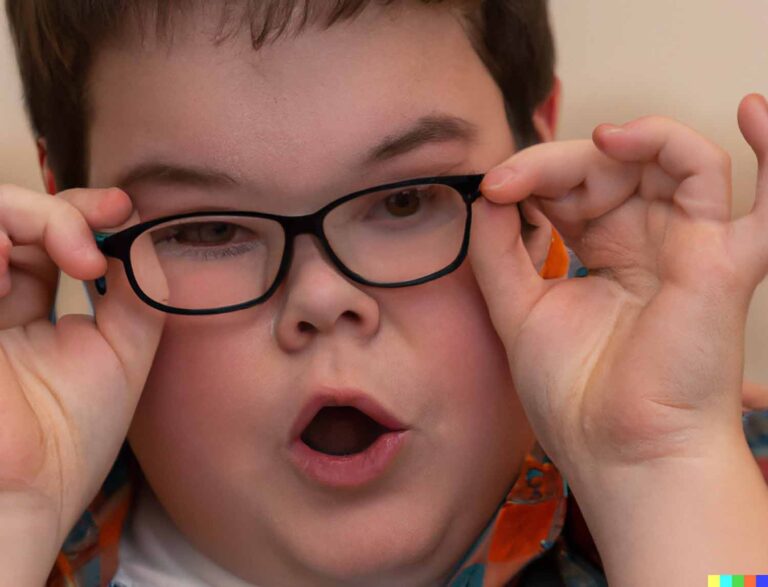How Does Down Syndrome Affect The Eyes?

About 1 in 700 children (less than 1 percent) are born with Down syndrome. Down syndrome is a condition in which a child has an extra chromosome. You can think of chromosomes as small packages that contain the genes in the body. These genes determine how a baby’s body forms and functions as it grows during pregnancy and after birth.
Typically, a baby is born with 46 chromosomes. Babies with Down syndrome have an extra copy of chromosome number 21. The medical term for having an extra copy of a chromosome is ‘trisomy.’ For this reason, Down syndrome is often referred to as Trisomy 21. This extra copy changes how the baby’s body and brain develop, which can cause both mental and physical challenges for the baby.
Down syndrome can have various effects on the eyes and visual system. While not all individuals with Down syndrome will experience the same eye-related issues, there are some common conditions and characteristics associated with Down syndrome that can affect vision. Here are a few examples:
- Refractive Errors: People with Down syndrome often have a higher prevalence of refractive errors such as nearsightedness (myopia), farsightedness (hyperopia), or astigmatism. These refractive errors can affect visual acuity and may require corrective lenses like glasses or contact lenses.
- Strabismus: Strabismus, commonly known as crossed or misaligned eyes, is more prevalent among individuals with Down syndrome. It occurs when the eyes do not align properly and may turn inward (esotropia) or outward (exotropia). Strabismus can affect binocular vision and depth perception.
- Amblyopia: Amblyopia, also called “lazy eye,” is another condition that may occur more frequently in individuals with Down syndrome. Amblyopia happens when one eye has better visual acuity than the other due to factors like strabismus or significant refractive differences. It can be treated with patching or vision therapy.
- Dry Eyes: Down syndrome individuals may have a higher likelihood of experiencing dry eyes due to reduced tear production or other underlying causes. Dry eyes can cause discomfort, irritation, and may affect visual clarity.
- Brushfield Spots: Brushfield spots are small, white or grayish spots that may appear on the iris (colored part) of the eye. They are relatively common in people with Down syndrome, but they are generally harmless and do not affect vision.
A recent addition to this list is the heightened risk for keratoconus in individuals with Down syndrome. Keratoconus is a cornea disorder that leads to progressively-worsening myopia and astigmatism. It’s estimated that between 5-30% of children with Down syndrome may have an irregular cornea or keratoconus. This condition typically develops around puberty and may be related to a steeper than average corneal curvature. Eye rubbing, often observed in individuals with Down syndrome, may also contribute to its development. The impact of keratoconus on vision can increase social isolation and make daily activities challenging.
It’s important to note that while these eye conditions are more common in individuals with Down syndrome, not everyone with Down syndrome will necessarily experience all or any of these issues. Many children with Down syndrome lead healthy and active lives. They can go to school, participate in activities and enjoy being social with others. Regular eye exams by an optometrist are crucial to detect and manage any eye-related concerns in individuals with Down syndrome. Do you know someone with Down Syndrome? You can feel comfortable scheduling an appointment with one of the doctors here at Compton Eye Associates.